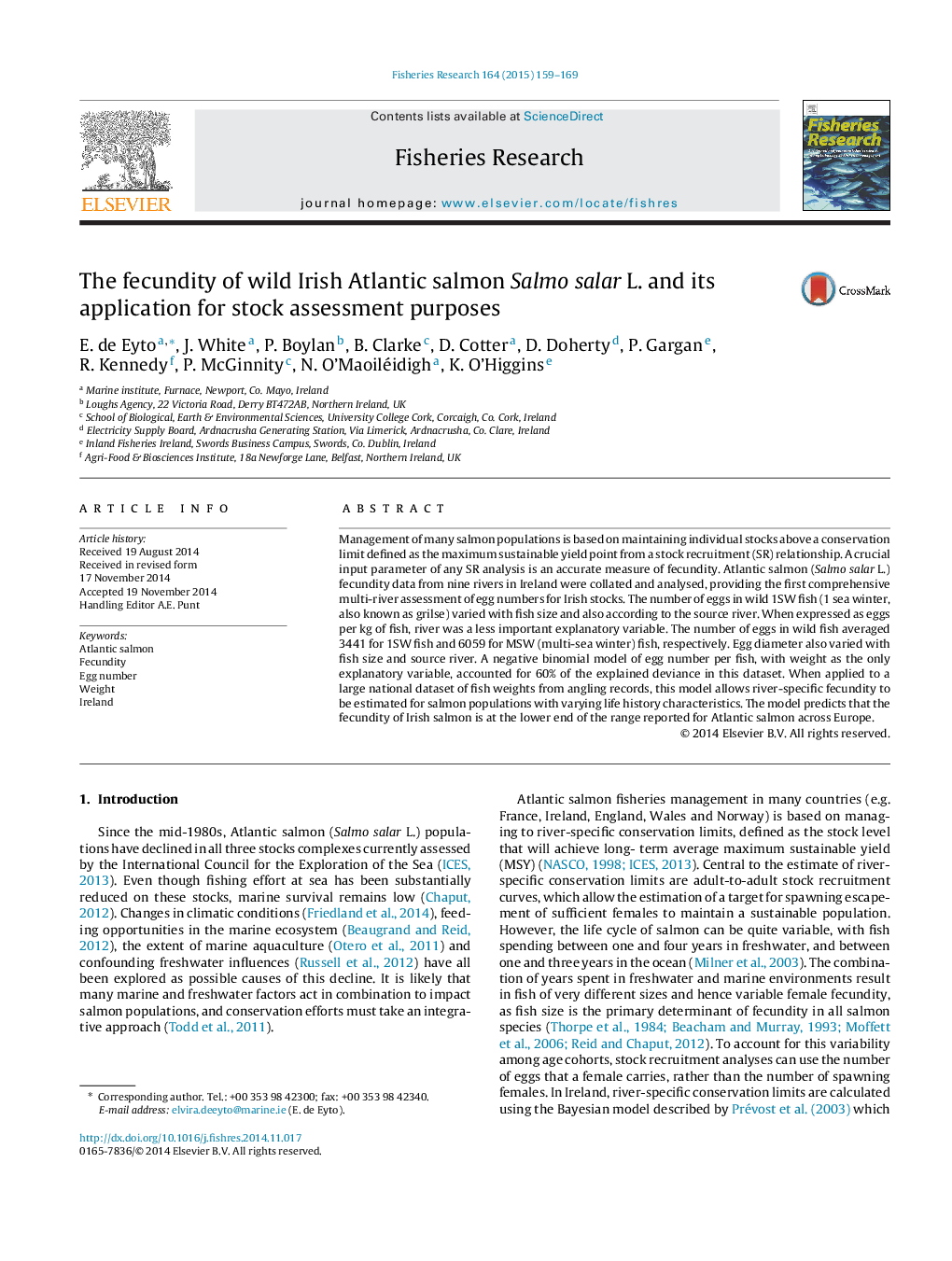| Article ID | Journal | Published Year | Pages | File Type |
|---|---|---|---|---|
| 6385687 | Fisheries Research | 2015 | 11 Pages |
Abstract
Management of many salmon populations is based on maintaining individual stocks above a conservation limit defined as the maximum sustainable yield point from a stock recruitment (SR) relationship. A crucial input parameter of any SR analysis is an accurate measure of fecundity. Atlantic salmon (Salmo salar L.) fecundity data from nine rivers in Ireland were collated and analysed, providing the first comprehensive multi-river assessment of egg numbers for Irish stocks. The number of eggs in wild 1SW fish (1 sea winter, also known as grilse) varied with fish size and also according to the source river. When expressed as eggs per kg of fish, river was a less important explanatory variable. The number of eggs in wild fish averaged 3441 for 1SW fish and 6059 for MSW (multi-sea winter) fish, respectively. Egg diameter also varied with fish size and source river. A negative binomial model of egg number per fish, with weight as the only explanatory variable, accounted for 60% of the explained deviance in this dataset. When applied to a large national dataset of fish weights from angling records, this model allows river-specific fecundity to be estimated for salmon populations with varying life history characteristics. The model predicts that the fecundity of Irish salmon is at the lower end of the range reported for Atlantic salmon across Europe.
Related Topics
Life Sciences
Agricultural and Biological Sciences
Aquatic Science
Authors
E. de Eyto, J. White, P. Boylan, B. Clarke, D. Cotter, D. Doherty, P. Gargan, R. Kennedy, P. McGinnity, N. O'Maoiléidigh, K. O'Higgins,
